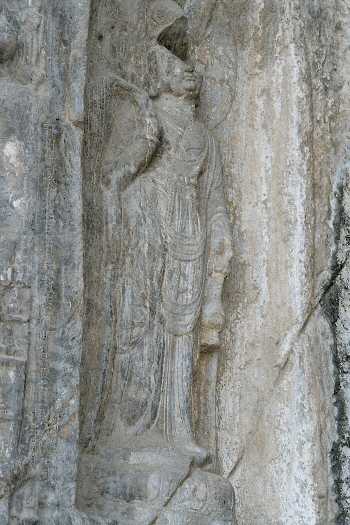
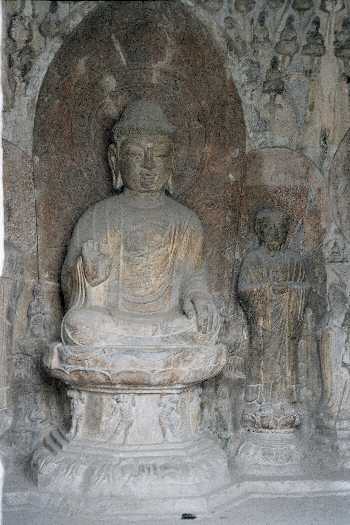
The Northern Wei Dynasty removed its capital from Datong to Luoyang. As in Datong, they also started to construct Buddhist Grottoes at the borders of the River Yi. Most of them, however, have been carved in the Tang Dynasty, which had a different beauty ideal. Unfortunately most of the grottoes in Luoyang have been damaged during the Second World War and the Civil War afterwards.
 |
 |
The most remarkable part of the Longmen Grottoes is the large Buddha ensemble, which was formerly hidden by a wooden shrine.
This shrine has been destroyed by a fire, so you can see the statues now from the River Yi.
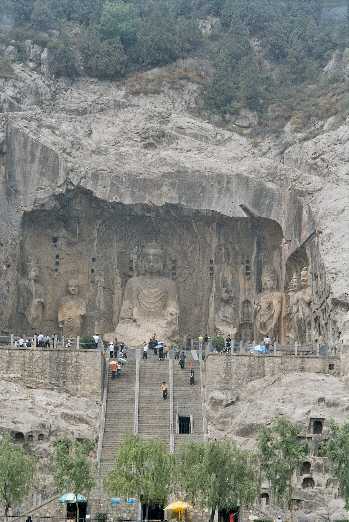
Here you can see some details of the statues. The Buddha statue is considered one of the most beautiful in world, having nearly
a feminine character. The other statues are followers of Buddha or the obligatory guardians.
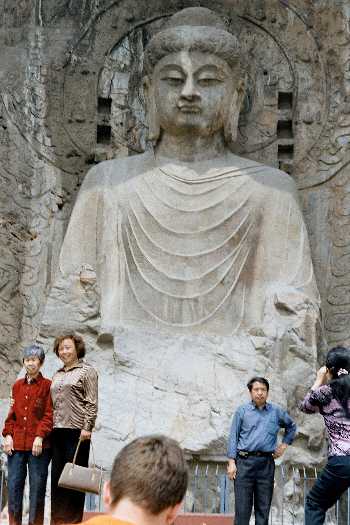 |
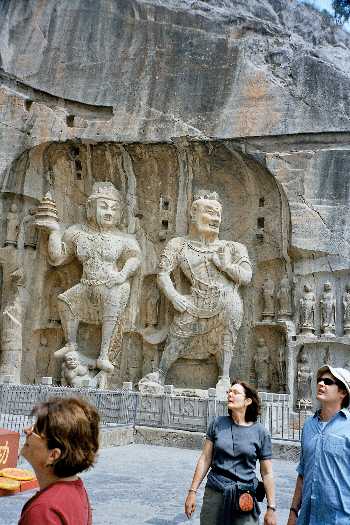 |
|
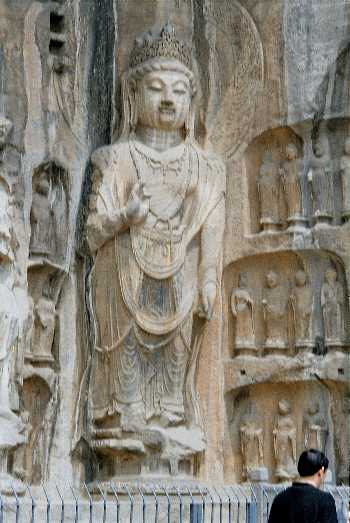 |
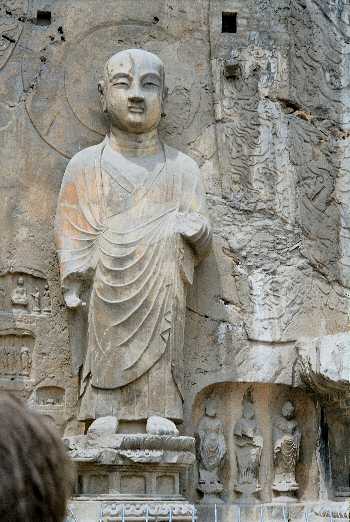 |
In the afternoon we went to the Baima (White Horse) Monastery. It is the first Buddhist monastery on Chinese ground, founded
during the Eastern Han Dynasty about 80 AD.
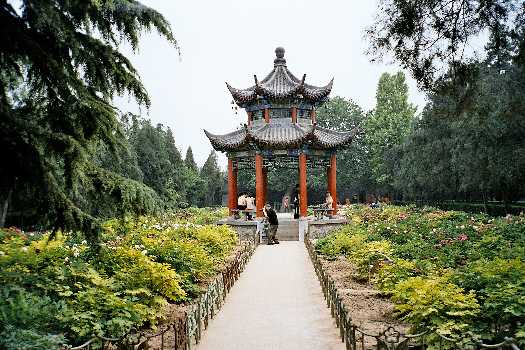 |
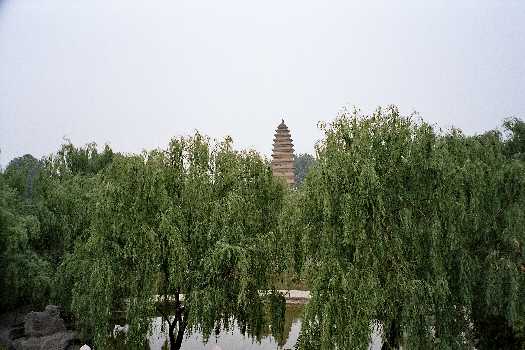 |
The next day we went to the famous Shaolin monastery, which is located at the Songshan, the middle one of the five holy mountains.
It was Friday 13, and the first day with heavy rain that we experienced. So I could not take too many pictures. The Pagoda Forest,
however, is quite interesting though.
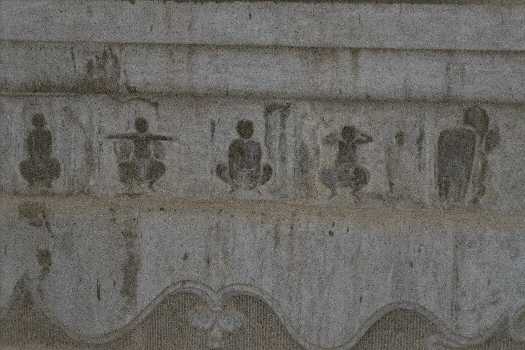 |
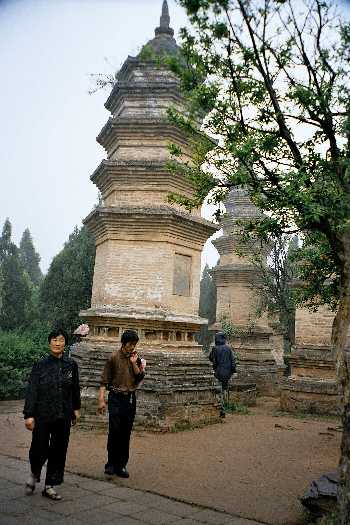 |
|
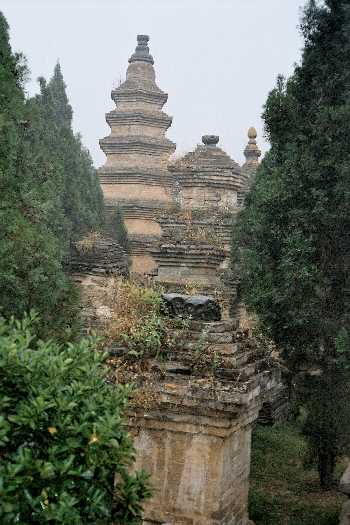 |
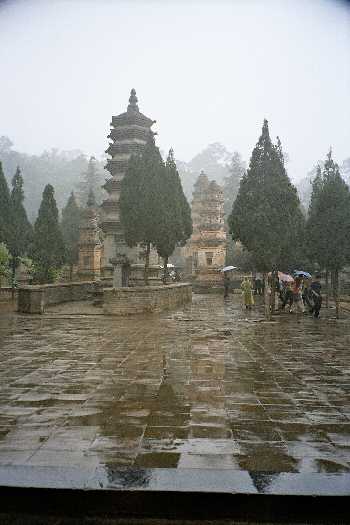 |
Before reaching Zhengzhou, where we took the train to Tai'an, we made a last stop in a daoist monastery. The most attractive
spot is a stele inscribed by Jiang Zemin. It might have been disrespect for the communist leader or the rain, but I did not take
a picture of the stele.
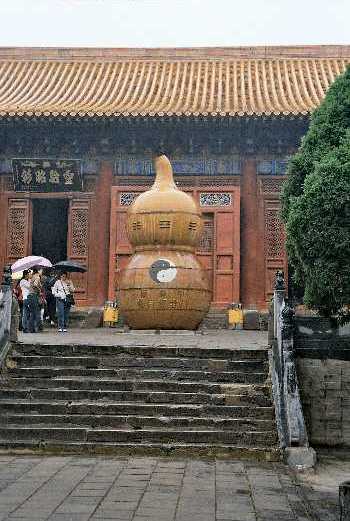 |
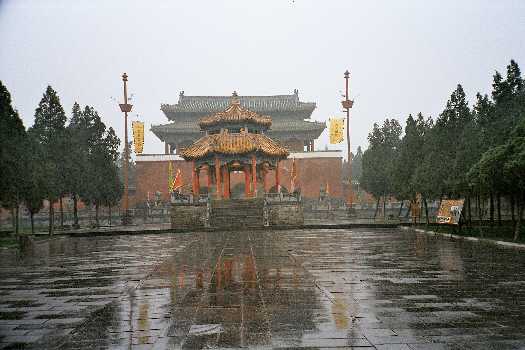 |